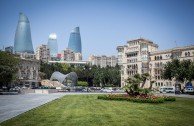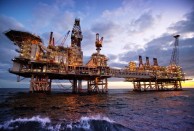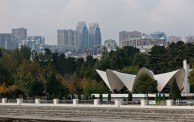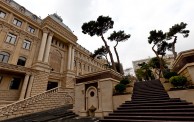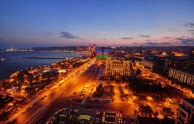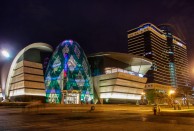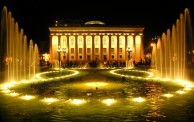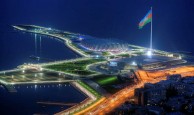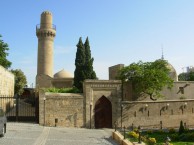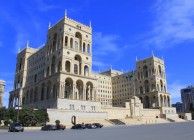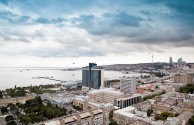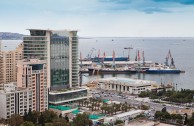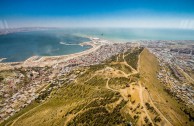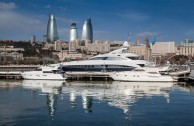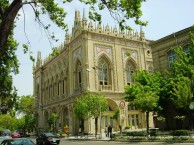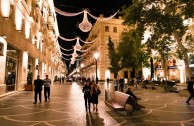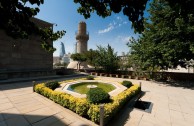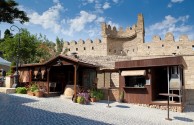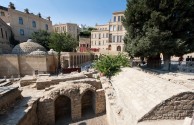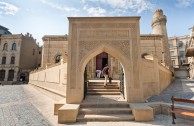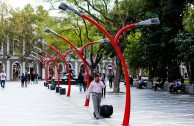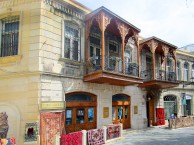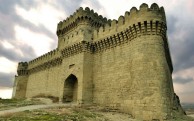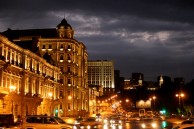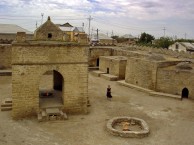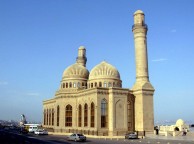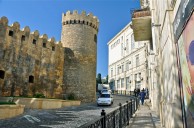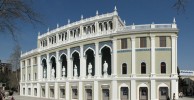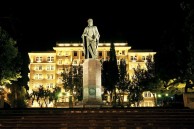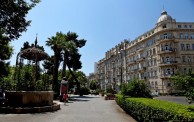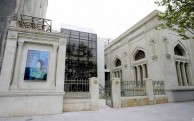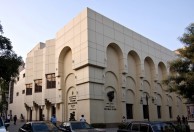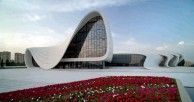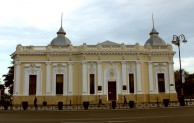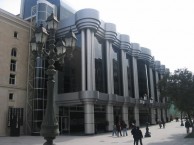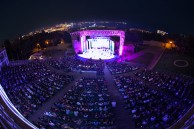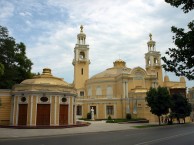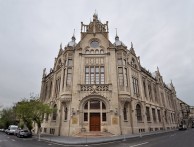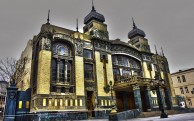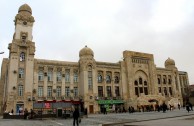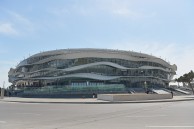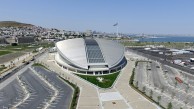BAKU
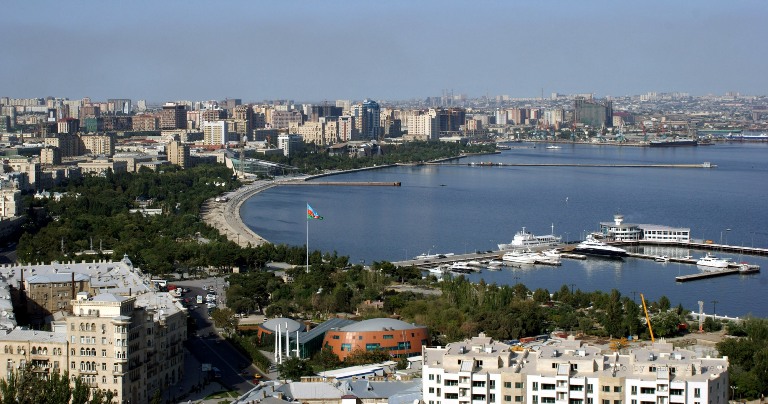
Baku, located at the joint of Europe and Asia and the capital of Azerbaijan is the largest urban center not only within the country, but across the Caucasus and around the Caspian Sea. At 28 meters below sea level, the city is in fact the lowest located capital in the world. The capital’s name itself is interpreted as “a city of winds” or “a city on a hill”. From data collected through intensive research it has been established that the city is over 5 and a half thousand years old.
Baku’s architecture varies enormously. Alongside the ancient fortress (walled inner part of the city - called “Icheri Sheher”) and its centuries-old Maiden Tower, both included on the UNESCO list of World Heritage Sites, Baku features ultra-modern sky-scrapers and cutting-edge construction like Flame Towers, Crystal Hall, the Heydar Aliyev Center and the SOCAR Tower and other grandiose buildings characterize the city’s historic past and its modern life. Baku Bay, a Legacy of the first Oil Boom of the late 19th – early 20th centuries, is particularly remarkable featuring a charming blend of European and Oriental styles, another integral component to the local architecture. These elements combined give a strikingly original and unique make up to the image of Baku. From ancient times Baku has been an important Silk Road entrepot due to its extremely convenient location at the crossroads of trade routes linking China and India with the Middle East and Europe.
Baku is the largest cultural center of Azerbaijan. It is the place of firsts - the national theatre first raised the curtain in the Islamic world, the first opera was performed, the first Azerbaijani newspaper was published, the first Azerbaijani library was opened. Today Baku is known to have more than 30 museums, 10 theatres, more than 40 state and private higher education institutions, a philharmonic, an opera house, film studios, picture galleries, cinemas and public libraries all housed in the city’s most beautiful buildings with interior decors every bit of which is as rich as their cultural content.
Baku has a very vibrant and thriving social life. The city takes pride in the wide range of cultural events taking place - both local and international and recently succeeded in making itself known as host to a number of high-level international events. The downtown and sea-front areas are favorite meeting places of both visitors and locals alike.
Baku enjoys a subtropical, semi-arid climate comprising hot and dry summers and cold, occasionally wet winters, with strong winds year round. However, unlike many other cities with this climate, Baku does not experience extremely hot summers. This is due to 2 factors. One its northern latitude and second the fact that it is located on the Absheron Peninsula on the shore of the Caspian Sea. Augmented by favorable climate, historically, this turned the town into a popular commercial hub and safe harbor for travelers. Baku has a moderate climate with its landscape dominated by semi-desert areas and known for the very peculiar winds of the peninsula. While the north wind, the khazri, cools the weather down in summer and chills it in winter, the southern one known as the ghilavar softens the climate all year round.
The seaside National Park is a remarkable boulevard stretching along the Caspian Sea. The National Flag Square and the National Flag Museum in the shape of an eight pointed star adds some special splendor to the area. The height of the flagpole reaches 162 meters and the total weight of the installation is 220 tons. The 2,450 sq meters of flag is 35 meters wide, 70 meters long and it weighs 350 kg. The Guinness world’s record book confirmed on 29 May 2010 that the pole of the Azerbaijani National Flag was the highest flagpole in the world.
Baku Crystal Hall is in the vicinity of the National Flag Square. The 2012 Eurovision Song Contest was held in the Crystal Hall.
International Mugham Center, Azerbaijani Carpet Museum, Stone Chronicle Museum in the territory of the National Flag Museum, as well as the YARAT Modern Art Center in the vicinity of the Square are cultural attractions that leave unforgettable impressions in visitors.
The Bayil boulevard that stretches from the National Flag Square brings more majesty to the Seaside National Park and glorifies the city. Modern infrastructure facilities in the area provide comfortable conditions for rest and relaxation.
Baku White City boulevard adds more beauty to the Caspian scene from the White City. This boulevard has been built in line with the latest standards in the area that once was known as Black city, the home of numerous industrial facilities.
Water Polo Arena in the new part of the Baku Boulevard in Bayil has the area of 72 thousand sq meters.
Baku Olympic Stadium that held the opening and closing ceremonies of the first European Games successfully hosted by Azerbaijan and a number of competitions, National Gymnastics Arena, Boyuk Shor boulevard and the park in the vicinity add extra glory to the city.
Baku has been beautifully landscaped with greenery all around the city – from flowers to grassy lawns, shrubs and trees aligning the roads and large parks and fountain areas where everyone is welcomed to relax.
There is an amazing boulevard stretching along the Caspian Sea front – the Park Boulevard. It is purely a pedestrian boulevard full of many restaurants, ice-cream parlors, places of entertainment for children, the newly- built Park Bulvar shopping mall, various statues and monuments, a musical fountain and the yacht club.
Looking out across the bay from the Park Boulevard one can spot the stadium, which hosted the 2012 EuroVision song contest, as well as the National Flag, one of the largest unsupported flags in the world, reaching an impressive height of 162m. (The flag itself is 35x70m and weighs 350kg.)

